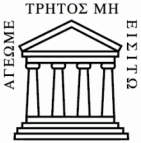Main webpage of record . . .
Encyclopedia of Mathematics https://encyclopediaofmath.org/wiki/Cullinane_diamond_theorem
Supplementary PDF from Jan. 6, 2006 https://encyclopediaofmath.org/images/3/37/Dtheorem.pdf
Originally published in paper version . . .
Computer Graphics and Art, 1978 http://finitegeometry.org/sc/gen/Diamond_Theory_Article.pdf
AMS abstract, 1979: "Symmetry Invariance in a Diamond Ring" https://www.cullinane.design/
American Mathematical Monthly, 1984 and 1985: "Triangles Are Square" http://finitegeometry.org/sc/16/trisquare.html
Personal sites . . .
Primary —
Personal journal http://m759.net/wordpress/
Mathematics website http://finitegeometry.org/sc/
Mathematics Images Gallery http://m759.net/piwigo/index.php?/category/2
Secondary —
Portfoliobox https://cullinane.pb.design/
Substack https://stevenhcullinane.substack.com/
Symmetry Summary https://shc759.wordpress.com
Diamond Theory Cover Structure https://shc7596.wixsite.com/website
SOCIAL:
Pinterest https://www.pinterest.com/stevenhcullinane/ (many mathematics notes)
Flickr https://www.flickr.com/photos/m759/ (backup account for images of mathematics notes)
Instagram https://www.instagram.com/stevencullinane
TikTok https://www.tiktok.com/@stevenhcullinane
X.com https://x.com/shc759
OTHER:
Replit viewer/download https://replit.com/@m759/View-4x4x4?v=1
SourceForge download https://sourceforge.net/projects/finitegeometry/
Academia.edu https://stevenhcullinane.academia.edu/ GitHub https://github.com/m759 (finite geometry site download)
Internet Archive: Notes on Groups and Geometry https://archive.org/details/NotesOnGroupsAndGeometry1978-1986/mode/2up
Cited at . . .
The Diamond Theorem and Truchet Tiles http://www.log24.com/log22/220429-Basque-DT-1.pdf
April 2024 UNION article in Spanish featuring the diamond theorem https://union.fespm.es/index.php/UNION/article/view/1608/1214
April 2024 UNION article in English http://log24.com/notes/240923-Ibanez-Torres-on-diamond-theorem-Union-April-2024-in-English.pdf
Cullinane in a 2020 Royal Holloway Ph.D. thesis https://pure.royalholloway.ac.uk/ws/portalfiles/portal/40176912/2020thomsonkphd.pdf
Squares, Chevrons, Pinwheels, and Bach https://www.yumpu.com/en/document/read/36444818/fugue-no-21-elements-of-finite-geometry
Observables programmed presentation of diamond theorem https://observablehq.com/@radames/diamond-theory-symmetry-in-binary-spaces
Josefine Lyche — Plato's Diamond https://web.archive.org/web/20240222064628/http://www.josefinelyche.com/index.php?/selected-exhibitions/platos-diamond/
Josefine Lyche — Diamond Theorem https://web.archive.org/web/20230921122049/http://josefinelyche.com/index.php?/selected-exhibitions/uten-ramme-nye-rom/
Professional sites . . .
Association for Computing Machinery https://member.acm.org/~scullinane
bio.site/cullinane … maintenance at https://biosites.com
ORCID bio page https://orcid.org/0000-0003-1135-419X
Google Scholar https://scholar.google.com/citations?view_op=list_works&hl=en&hl=en&user=NcjmFwQAAAAJ&sortby=pubdate
Academic repositories:
Harvard Dataverse https://dataverse.harvard.edu/dataset.xhtml?persistentId=doi:10.7910/DVN/KHMMVH
Harvard DASH article on PG(3,2) https://dash.harvard.edu/handle/1/37373777
Zenodo website download https://zenodo.org/records/1038121
Zenodo research notes https://zenodo.org/search?q=metadata.creators.person_or_org.name%3A%22Cullinane%2C%20Steven%20H.%22&l=list&p=1&s=10&sort=bestmatch
Figurate Geometry at Open Science Framework (OSF) https://osf.io/47fkd/
arXiv: "The Diamond Theorem" https://arxiv.org/abs/1308.1075
















